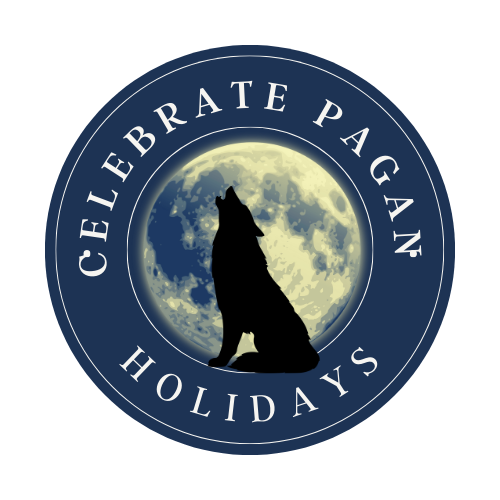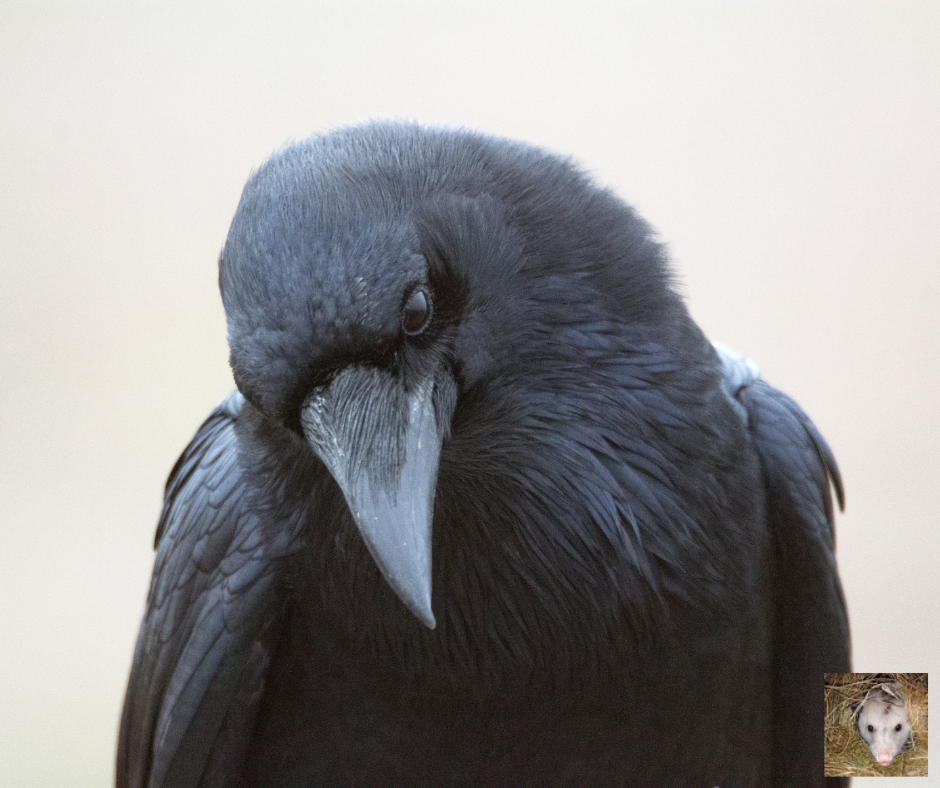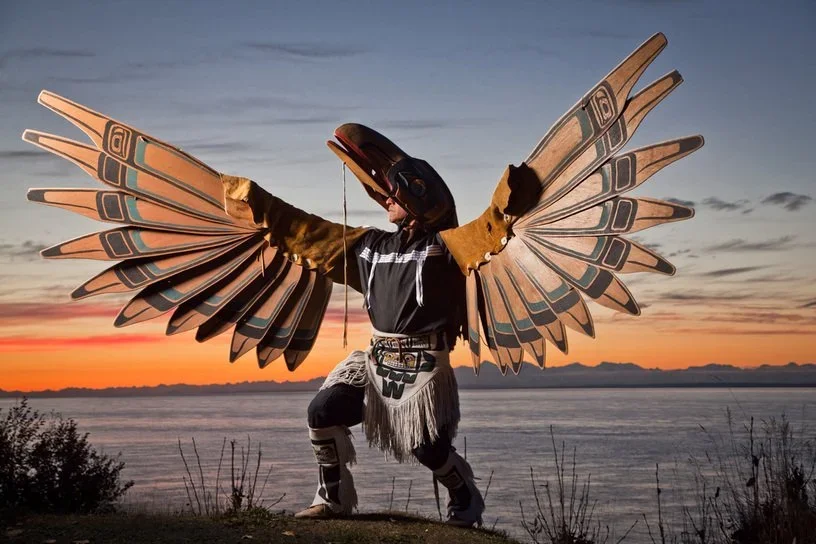The sharp caw of a crow outside your window, the sight of ravens dancing on wind currents, or a murder of crows gathering in your yard—these moments often feel charged with meaning. For modern pagans and spiritual seekers, these corvids represent far more than clever birds. They serve as bridges between worlds, messengers from the divine, and powerful spirit animals that have captured human imagination for millennia.
Understanding their symbolic associations, the signs they send, and their connection to deities deepens our relationship with them. Alongside the mystical, learning their natural history helps us appreciate their presence in the physical world as well.
This article will talk about their symbolism, tips to communicate with ravens and crows, important deities, and how crows & ravens serve as messengers.
This crow wants to communicate!
Crow and Raven Symbolism
Intelligence & Cleverness – Known for tool use, memory, and creative problem-solving.
Transformation & Change – Messengers of endings, beginnings, and rebirth.
Mystery & Magic – Connected to the unseen, shadow work, and hidden knowledge.
Messenger Between Worlds – Guides carrying news from the spirit world, ancestors, or deities.
Prophecy & Omens – Symbols of foresight and warnings.
Trickster Energy – Bringers of humor, chaos, and clever disruption.
Death & the Afterlife – Seen on battlefields or graveyards, tied to death and the cycle of life.
Protection – Fierce defenders of their young and their community.
Adaptability & Survival – Thriving in diverse environments, teaching resilience.
Community & Cooperation – Crows live in family groups and roosts, showing the strength of unity.
The Ancient Legacy of Corvid Wisdom
Ravens and crows have held sacred positions across cultures worldwide, their intelligence and mysterious nature earning them roles as divine messengers, tricksters, and guides to the otherworld. They appear in creation myths, folklore, and spiritual traditions from the Norse and Celtic peoples to Native American tribes and ancient Greek civilization.
The reverence for these birds stems from their remarkable intelligence and their comfort around death—qualities that made them natural symbols for wisdom and the mysteries of life and death. Our ancestors observed ravens and crows gathering at battlefields and places of death, leading to their association with both endings and beginnings, destruction and creation.
In many traditions, these birds are psychopomps—guides that help souls transition between the world of the living and the realm of the dead. This role makes them particularly meaningful for modern pagans who work with ancestor spirits, death magic, or shadow work.
Read my article Honoring Anubis: God of the Afterlife and Transitions to learn more about this psychopomp
5 Ways Corvids Communicate with us
How do we know when ravens or crows are trying to communicate with us rather than simply going about their daily bird business? The key lies in paying attention to context, timing, and our intuitive responses to their presence.
When a raven or crow communicates, it’s often about heightened awareness. They may be urging you to notice what’s happening in the hidden layers of a situation, or to be prepared for transformation.
Unusual Behavior Patterns:
A bird following you, ravens appearing in unusual numbers, calling insistently, or landing very close could be sending a message. When corvids act outside their normal patterns, it often signals spiritual significance.
Trust your instincts—if an encounter feels meaningful, it likely is.
2. Timing and Synchronicity:
Pay attention to when corvid encounters occur. Do they happen during times of transition, decision-making, or spiritual seeking? Corvids appearing during meditation, ritual, or moments of deep contemplation often carry messages about the situation at hand.
Check out my Resource Page for free downloads and PDF Books
3. Repetitive Encounters:
When the same corvid or group appears repeatedly in your life, especially in significant locations, this persistence usually indicates an important message. These birds are intelligent enough to recognize individual humans and may choose specific people to interact with regularly.
4. Dream Appearances:
Ravens and crows appearing in dreams often signal change, spiritual insight, or the need to pay attention to your intuition. Ravens and crows in dreams often represent messages from the subconscious or spiritual realms. Dream corvids might deliver prophecy, reveal hidden knowledge, or guide you through personal transformation.
The messages themselves vary widely but often relate to themes of change, hidden knowledge, protection, or calls to embrace your authentic power. Some people receive specific guidance about life decisions, while others find corvids appearing during times when they need to pay attention to their intuition or examine what they've been avoiding.
5. When They Appear in Times of Change
Crows and ravens often show up during periods of upheaval. If you’re changing jobs, moving, ending a relationship, or embarking on spiritual work, they may be guiding you through the liminal space—that in-between phase where the old is gone but the new has not yet fully formed.
In these moments, their message is one of adaptation, cleverness, and perspective. They remind you that endings are also beginnings, and that you have the tools to navigate what comes next.
Divine Connections
Many deities across various pantheons claim corvids as their sacred animals or messengers, reflecting the universal recognition of these birds' spiritual significance. Calling on these deities or studying their stories can help deepen your understanding of the raven and crow’s spiritual role.
Odin, the All-Father with Huginn (thought) and Muninn (memory)
Odin and the Norse Tradition:
Perhaps the most famous corvid-deity relationship belongs to Odin, the All-Father of Norse mythology. His two ravens, Huginn (thought) and Muninn (memory), fly across the nine worlds each day, gathering information and returning to whisper their discoveries in his ears. For modern pagans working with Norse deities, ravens often represent the pursuit of wisdom, the importance of memory and learning from the past, and the value of seeing situations from multiple perspectives.
The Morrigan and Celtic Power:
In Celtic tradition, The Morrigan—a triple goddess of war, fate, and death—appears as both woman and crow. She represents sovereignty, prophecy, and the fierce protection of what matters most. Encounters with crows or ravens might signal The Morrigan's presence, particularly during times requiring courage, truthful assessment of situations, or protection of loved ones.
Badb, Macha, and Nemain: These three Celtic goddesses, sometimes considered aspects of The Morrigan, each have strong corvid associations. They appear on battlefields as crows, influencing outcomes and guiding warriors' souls to the afterlife.
Bran the Blessed:
This Celtic god-king transformed into a raven and represents protection, prophecy, and the connection between the mortal world and the otherworld. His ravens were said to protect Britain itself.
Apollo kept ravens as messengers and symbols of prophecy
Apollo and Greek Wisdom:
In Greek mythology, Apollo kept ravens as messengers and symbols of prophecy. However, their feathers turned from white to black as punishment for delivering unwelcome but truthful news—a reminder that truth-telling isn't always appreciated but remains necessary. In a poem by Ovid, Apollo, sent a white crow or raven to watch over his lover Coronis. The raven returned to Apollo with news of Coronis's infidelity. Enraged, Apollo cursed the bird, turning its feathers black and giving it a harsh caw. Thus, the black crow became a symbol of bad news, betrayal, and possibly a reminder of Apollo's wrath.
Read my article Birds And Divination: Ancient Roman Augury And Greek Ornithomancy
Native American Connections:
Many Native American traditions honor Crow and Raven as cultural heroes, creators, and trickster figures. They bring fire, light, and knowledge to humanity, often through cleverness rather than force. They represent the power of intelligence, adaptability, and finding unconventional solutions to problems.
In Tlingit (KLING-git) culture, the raven holds immense cultural and historical importance. Raven is seen as the creator of the world and the bringer of daylight, having stolen the sun to illuminate the world.
Gene Tagaban (Guuy Yaau) Tlingit storyteller
Huitzilopochtli (Aztec) – This war god is sometimes connected with raven-like birds as heralds of conflict and destiny.
Working with Corvid Energy
For modern pagans wanting to deepen their relationship with ravens and crows, several practices can facilitate connection and communication.
Appropriate Offerings: If you leave offerings outdoors make sure they are appropriate. Foods like unsalted nuts or sunflowers or berries. Avoid bread, which lacks nutritional value and leads to a disease called angel wing. Consistent offerings in the same location can establish ongoing relationships with local corvids.
To attract crows, consider planting native trees, shrubs, and flowers that offer food sources and nesting sites. Some good choices include mulberry trees, serviceberries, dogwoods, oaks, elderberries, and, sunflowers. Or you can pretend to be a scarecrow!
Respectful Observation: Spend time watching corvids without trying to control or capture them. Learn their patterns, vocalizations, and behaviors. This observation builds mutual recognition and trust.
Meditation and Journeying: Use guided meditations or shamanic journeying techniques to connect with corvid spirits. These practices can reveal personal meanings and messages specific to your spiritual path.
Shadow Work: Given their association with death and hidden knowledge, corvids make powerful allies for shadow work—the psychological and spiritual practice of integrating rejected or hidden aspects of the self.
Symbolic Tools – Wear jewelry with raven or crow imagery, keep a feather (ethically found) on your altar, or use their image in spellwork for transformation and insight.
Find out what crow/raven is telling you!
Careers For Crow & Raven People
Careers where insight, adaptability, and communication are key tend to be especially fulfilling for those guided by crows or ravens.
1. Teachers, Writers, and Communicators
Crows and ravens are vocal, social, and skilled at passing along knowledge. People with this spirit guide often excel at teaching, writing, public speaking, or journalism, where they can share ideas, challenge perceptions, and spark transformation.
2. Healers, Therapists, and Counselors
These birds are often linked to transformation and guiding others through difficult transitions. That makes their people good at psychology, counseling, life coaching, or alternative healing practices—helping others navigate shadow work, grief, or personal growth.
3. Scientists, Detectives, and Investigators
Ravens and crows are curious and clever problem-solvers. Those who carry their energy often enjoy scientific research, detective work, archaeology, or investigative journalism, where keen observation and puzzle-solving are prized.
4. Spiritual Guides and Magic Workers
Since ravens and crows are messengers between worlds, their people may be drawn to pagan priesthood, shamanic practice, divination, or spiritual teaching. These careers let them act as bridges between the mundane and the mystical.
In North America the American crow is common and widespread. They are smaller and the beak is slightly less pronounced. The common raven is found in western North America as well as widespread throughout Eurasia. In the us ravens are found in more rural areas especially in the Rockies. Both are omnivores and will prey on mice, young rabbits, frogs, and other small animals as well as eat seeds, nuts, and berries.
Corvid Biology
Understanding corvid biology enhances rather than diminishes their spiritual significance. These birds possess remarkable intelligence that borders on the mystical, helping explain why cultures worldwide recognized their special nature.
Scientists refer to them as corvids and the genus Corvus has about 50 species found around the world. These birds are very social and incredibly smart. Like humans they often collaborate together and as we will see collaborate with us as well.
Exceptional Intelligence: Ravens and crows belong to the corvid family, which includes some of the most intelligent birds on Earth. They demonstrate problem-solving abilities comparable to great apes, use tools in sophisticated ways, and can plan for future events. Ravens have been observed playing games, engaging in aerial acrobatics for fun, and even appearing to hold "funerals" for deceased flock members.
Complex Communication: Corvids possess extensive vocabularies with distinct calls for different situations—danger warnings, food discoveries, territorial claims, and social bonding. They can learn to mimic human speech and other sounds, adapting their communication to their environment. This linguistic flexibility makes them natural messengers and intermediaries.
Social Intelligence: These birds recognize individual humans and can pass this knowledge to their offspring, creating multi-generational relationships with specific people. They remember faces, hold grudges against those who threaten them, and show gratitude to humans who help them. This social awareness makes meaningful human-corvid relationships possible. Both form strong bonds and have been observed showing what appears to be empathy toward their mates and companions.
Longevity and Memory: Ravens can live over 20 years in the wild, with some captive birds reaching 40 years or more. Their excellent memory allows them to remember locations, individuals, and experiences across decades, making them living repositories of local knowledge and wisdom.
Adaptability: Corvids thrive in diverse environments from arctic tundra to urban centers. This adaptability mirrors their role as spiritual messengers—they can function across different realms and circumstances, making them ideal intermediaries between worlds.
Diet: Omnivores with a flexible diet—fruit, insects, carrion, seeds, and even human garbage. This adaptability is part of their symbolic message about resilience.
Author, Ameya (Ame), founder of CPH is an eclectic pagan and green witch. A retired science teacher who still works in environmental educator and has spent years doing wildlife rehabilitation. So yes, you can say she love animals and communicates with them often.











